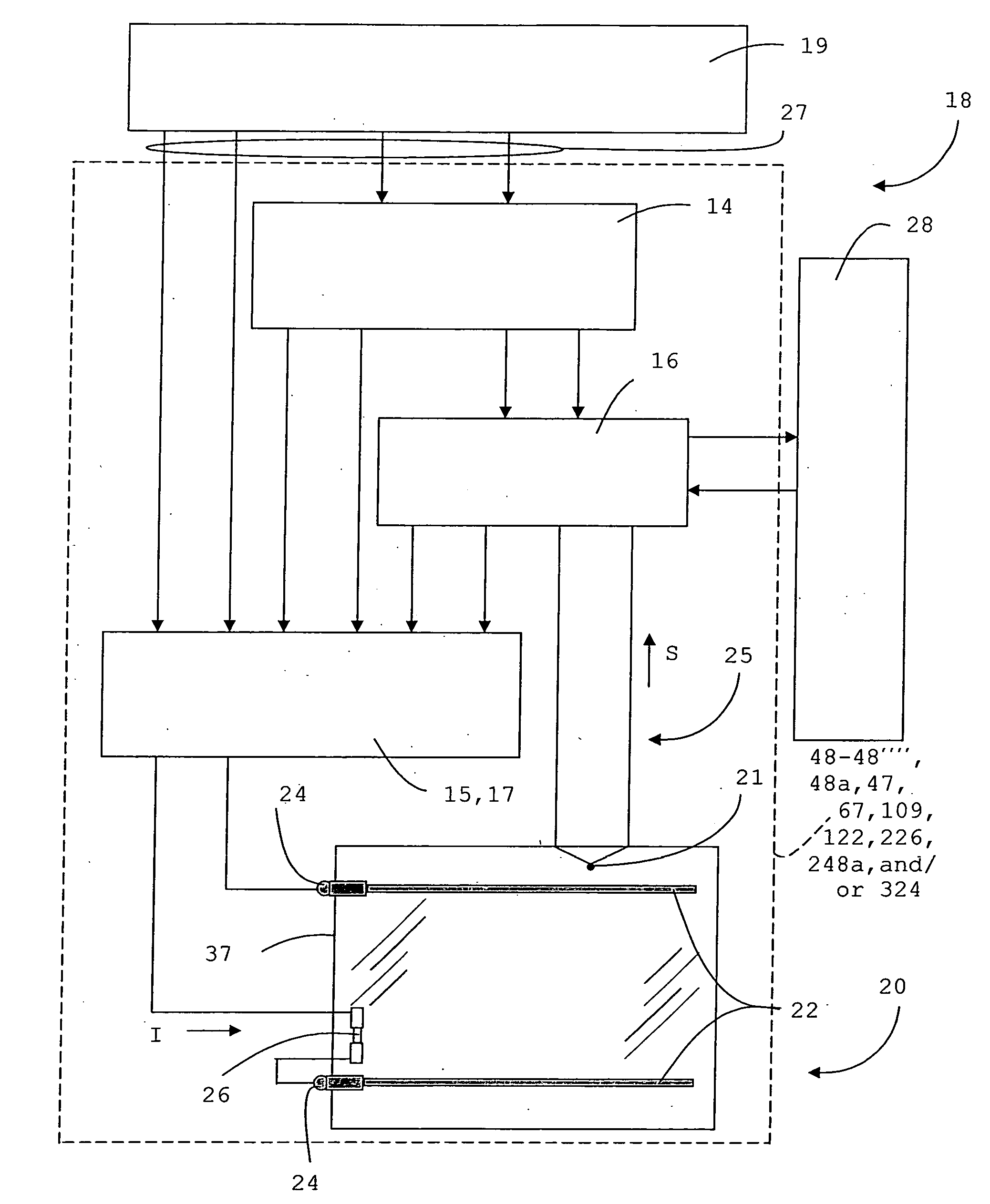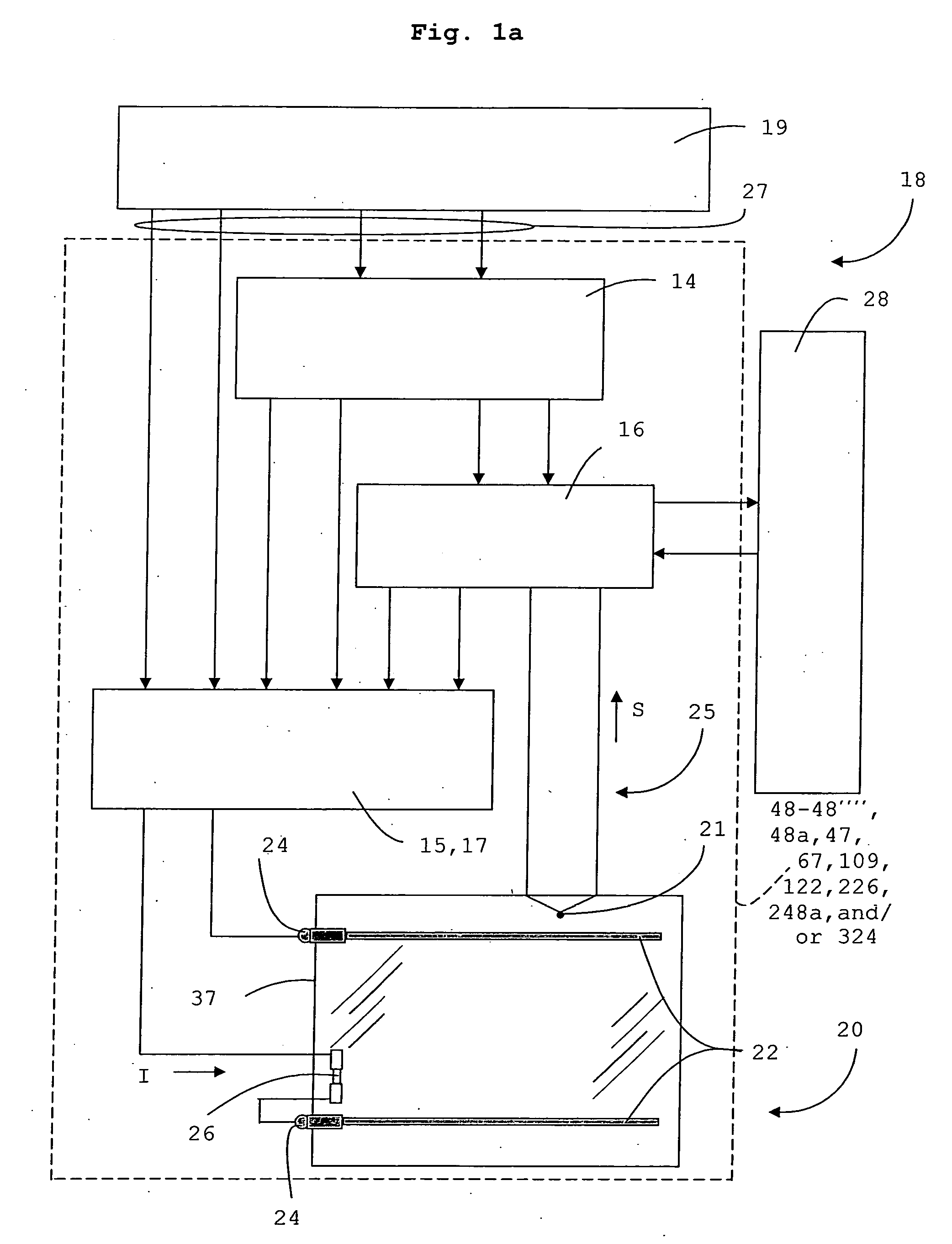Heated glass panel frame with electronic controller and triac
a technology of electronic controller and heated glass, applied in the direction of heating, heating, moisture control, electrical control of such processes and activities, can solve the problems of waste of energy, non-uniform coating, and insufficient use of coated glass,
- Summary
- Abstract
- Description
- Claims
- Application Information
AI Technical Summary
Benefits of technology
Problems solved by technology
Method used
Image
Examples
Embodiment Construction
[0061] The present invention employs an integrated connection circuit 18, as shown in FIG. 1a, where electrical current (I) passes through a coating that is disposed on a sheet of a dielectric material, for example, an electrically conductive heated glass panel 20, to generate heat that can be used for warming, cooking, moisture control, and the like. The panel 20 may be realized within the present invention as a laminated panel 40 (see, for example, FIG. 9a), an insulated glass panel 30 (see, for example, FIG. 8a), or a combination thereof. The present invention has also been found to apply to sheets that are dielectric substrate materials other than glass, for example, ceramic and glass-ceramic materials.
[0062] In order to control the electrical current (I) flowing through the electrically conductive heated glass panel 20, an electronic solid-state controller 16 (for example, a programmable application-specific integrated circuit (ASIC) chip, see 12C671 / P of FIG. 2), would monito...
PUM
| Property | Measurement | Unit |
|---|---|---|
| power | aaaaa | aaaaa |
| temperatures | aaaaa | aaaaa |
| temperature | aaaaa | aaaaa |
Abstract
Description
Claims
Application Information
 Login to View More
Login to View More - R&D
- Intellectual Property
- Life Sciences
- Materials
- Tech Scout
- Unparalleled Data Quality
- Higher Quality Content
- 60% Fewer Hallucinations
Browse by: Latest US Patents, China's latest patents, Technical Efficacy Thesaurus, Application Domain, Technology Topic, Popular Technical Reports.
© 2025 PatSnap. All rights reserved.Legal|Privacy policy|Modern Slavery Act Transparency Statement|Sitemap|About US| Contact US: help@patsnap.com



